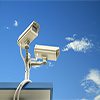
Columnist calls for public security cameras after the disturbances in Ferguson
- By Matt Holden
- Aug 21, 2014
Larry Seltzer, a columnist writing for zdnet.com, has called on cities across the country to adapt public security cameras in an effort to promote safety and security. He also says police forces should wear cameras on their clothing in order to record and document everything that happens.
After the incidents in Ferguson, MO, Seltzer says that a lot of the unrest could have been prevented through the use of security cameras placed around the city. Many citizens don’t like the idea of constantly being watched and monitored, but Seltzer’s take is that nobody has a reasonable expectation of privacy out in public.
He cited a Wall Street Journal article looking at cameras that police offers wear and how that also could have helped prevent the situation that escalated. These cameras not only help document the actions of police officers, but it holds them accountable; something the public at large wants.
Seltzer also views cameras as a way to eliminate eyewitness accounts and any other form of subjective data retrieval.
A question he poses is how to govern access to the data by police or other people, and his suggestion is to log the viewing of the video tape with reasons why it is being viewed. This eliminates police officers or other officials from going back and trying to remove footage.
About the Author
Matt Holden is an Associate Content Editor for 1105 Media, Inc. He received his MFA and BA in journalism from Ball State University in Muncie, Indiana. He currently writes and edits for Occupational Health & Safety magazine, and Security Today.